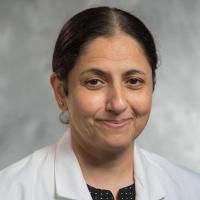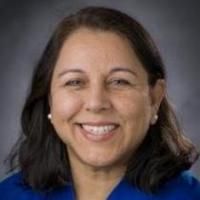Beyond predicting diagnosis: Is there a role for measuring biotinidase activity in liver glycogen storage diseases?
Date
2022-06
Journal Title
Journal ISSN
Volume Title
Repository Usage Stats
views
downloads
Citation Stats
Attention Stats
Abstract
Introduction
Biotinidase synthesis is needed to recycle biotin for essential metabolic reactions. Biotinidase activity is lower than normal levels in advanced liver disease but is higher in hepatic glycogen storage disorders (GSDs), however the cause of this association remains unclear.Methods
In this study, biotinidase activity was measured in plasma samples from 45 individuals with hepatic GSDs; GSDI (a, b; n = 25) and GSD III (a, b; n = 20), complemented by a chart review to associate biotinidase activity levels with clinical laboratory and imaging findings known to be implicated in these GSDs.Results
Our findings showed variation in biotinidase activity levels among subjects with GSD I and III; biotinidase activity correlated positively with hypertriglyceridemia in subjects with GSD I (r = 0.47, P = 0.036) and GSD III (r = 0.58, P = 0.014), and correlated negatively with age (r = -0.50, P = 0.03) in patients with GSD III. Additionally, biotinidase activity was reduced, albeit within the normal range in subjects with evidence of fibrosis/cirrhosis, as compared to subjects with hepatomegaly with or without steatosis (P = 0.002).Discussions
These findings suggest that abnormal lipid metabolism in GSD I and III and progressive liver disease in GSD III may influence biotinidase activity levels. We suggest that a prospective, multi-center, longitudinal study designed to assess the significance of monitoring biotinidase activity in a larger cohort with hepatic GSDs is warranted to confirm this observation.Take-home message
Altered lipid metabolism and advancing liver fibrosis/cirrhosis may influence biotinidase activity levels in patients with hepatic glycogen storage disease. Thus, longitudinal monitoring of biotinidase activity, when combined with clinical and other biochemical findings may be informative.Type
Department
Description
Provenance
Subjects
Citation
Permalink
Published Version (Please cite this version)
Publication Info
El-Gharbawy, Areeg, Adviye A Tolun, Carine A Halaby, Stephanie L Austin, Priya S Kishnani and Deeksha S Bali (2022). Beyond predicting diagnosis: Is there a role for measuring biotinidase activity in liver glycogen storage diseases?. Molecular genetics and metabolism reports, 31. p. 100856. 10.1016/j.ymgmr.2022.100856 Retrieved from https://hdl.handle.net/10161/26669.
This is constructed from limited available data and may be imprecise. To cite this article, please review & use the official citation provided by the journal.
Collections
Scholars@Duke

Areeg Hassan El-Gharbawy
I am an Associate Professor in the Department of Pediatrics, Division of Medical Genetics at Duke University; pursuing a career in clinical/translational research with 70% protected time for research. My clinical background is broad encompassing residency and fellowship training in internal medicine, endocrinology, diabetes, nutrition, metabolism, and clinical and biochemical genetics. This uniquely positioned me to evaluate and study pediatric and adult patients with inborn errors of metabolism, mitochondrial disorders, and lysosomal storage diseases. I transitioned from clinical medicine to a career in translational research to address the needs of patients with rare inherited metabolic disorders due to the paucity of therapies and biomarkers. My strength comes from my experience in managing patients with different inborn errors of metabolism and optimizing their treatment based on their underlying clinical, molecular, and biochemical phenotypes. In the era of precision medicine and big data analysis, my aim is to utilize my clinical skills and available tools at Duke University to conduct studies with implications for new drug, mechanism, and biomarker discovery. Studies are and will be conducted at Duke clinical research center in collaboration with clinical and basic scientists including Priya Kishnani, MD, Dwight Koeberl MD, Ph.D., and Karl-Dimiter Bissig MD, Ph.D. who are well established and funded clinical and basic science investigators at Duke. This collaboration allows me to integrate clinical data generated from natural history studies, with result from animal models, and metabolomics. This has implications for discovering innovative therapies, mechanisms, and biomarkers that serve and optimize patient care. I am currently analyzing metabolomics data on patients with Glycogen storage diseases and new therapeutics. I hold an IND on a PI initiated (industry-funded) clinical trial (pilot study) for using triheptanoin an anaplerotic compound that promotes energy through the Krebs cycle in patients with glycogen storage disease type 1.

Deeksha Sarihyan Bali
1)Development of new non-invasive laboratory diagnostic methods using enzymology and molecular diagnostic techniques for Glycogen Storage Diseases (GSDs) and Lysosomal Storage Diseases (LSDs) like Pompe, Fabry, Gaucher, MPS - for early diagnosis and treatment modalities. Exploration of new high throughput diagnostic platforms with an idea of implementation into New born screening (NBS)of these diseases.
2)Clinical research studies associated with Pompe disease with a goal to improve the diagnosis, current therapies and patient care, with special emphasis on clinical development of Cross Reactive Immunologic Material (CRIM) diagnostic methods and association with underlying pathogenic GAA mutations and clinical correlations.
3) Clinical research studies involving other common LSDs (Fabry, MPSI,II,IVa and VI, Gaucher, Wolman disease and more) focusing on early diagnosis and new born screening.
4)Understanding the hepatocellular adenoma (HCA) and hepatocellular carcinomas (HCC) transformation in GSD I, using paired samples from resected adenomas and adjoining liver tissue. Experiments use SNP and expression microarray analysis, miRNA and CNV analysis in collaboration with other investigators.
5)Pursuing genotype-phenotype correlations for various clinical phenotypes of GSD IX, in order to better understand clinical heterogeneity. Severe phenotypes of GSD IX resulting in liver cirrhosis and Cardiac involvement are of special interest to us, especially their association with the underlying pathogenic mutations.
6)Research on Pompe/Mannose-6-phosphate receptor (M6PR300) double knock out mice to understand the role of M6PR in rhGAA uptake and glycogen clearance and also beta-agonist like Clenbuterol.
Unless otherwise indicated, scholarly articles published by Duke faculty members are made available here with a CC-BY-NC (Creative Commons Attribution Non-Commercial) license, as enabled by the Duke Open Access Policy. If you wish to use the materials in ways not already permitted under CC-BY-NC, please consult the copyright owner. Other materials are made available here through the author’s grant of a non-exclusive license to make their work openly accessible.
